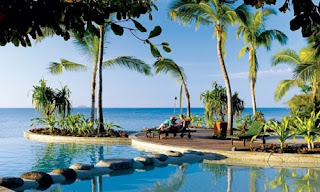What is Travel?
People travel for a variety of reasons: to escape, explore, understand, and participate. But at the core of the experience lies the destination - the place that hands something to the traveller to keep forever and share with others. This toolkit helps destinations put in place strategies and programs that will best tell their unique story and become an inviting host for visitors no matter the purpose of their journey. Destination management organizations (DMO) are often the only advocates for the holistic tourism industry in a place, and in this role, they ensure the mitigation of tourism’s negative impacts to the environment and local communities as well as the sharing of opportunities for a vibrant exchange of people.
In fact, a DMO may best serve to facilitate dialogue among the private sector, public sector, and other stakeholders that may otherwise never collaborate or understand how their decisions reverberate down a destination’s long tourism value chain. Because of this unique capability, DMOs prove invaluable for supporting tourism development, especially in developing destinations where tourism is an important economic driver and mechanism for equitable social capacity building. Developing a DMO iteratively relies on identifying and redefining a destination vision through collaboration
The pages that follow outline on how to build a successful DMO to increase visitation while preserving a destination’s assets. Every destination is different, however, so no one volume could ever be a complete resource. The information within hopefully guides the reader to explore more deeply additional interests and seek out examples of innovation by other organizations around the world. The processes, examples, and tools have been adapted from several years of expertise in the field by tourism professionals. We would like to thank those individuals who — without their diligent work and insight — this toolkit would not be possible: James Dion, Shawndra Herry, Matt Humke, Simon Jones, Eric Lin, Juan Luna Kelser, Hamilton McNutt, Jennifer Park, Chris Seek, Natalie Sellier, Ashley Silver, and Jonathan Tourtellot.
What is Travel?
In fact, a DMO may best serve to facilitate dialogue among the private sector, public sector, and other stakeholders that may otherwise never collaborate or understand how their decisions reverberate down a destination’s long tourism value chain. Because of this unique capability, DMOs prove invaluable for supporting tourism development, especially in developing destinations where tourism is an important economic driver and mechanism for equitable social capacity building. Developing a DMO iteratively relies on identifying and redefining a destination vision through collaboration
The pages that follow outline on how to build a successful DMO to increase visitation while preserving a destination’s assets. Every destination is different, however, so no one volume could ever be a complete resource. The information within hopefully guides the reader to explore more deeply additional interests and seek out examples of innovation by other organizations around the world. The processes, examples, and tools have been adapted from several years of expertise in the field by tourism professionals. We would like to thank those individuals who — without their diligent work and insight — this toolkit would not be possible: James Dion, Shawndra Herry, Matt Humke, Simon Jones, Eric Lin, Juan Luna Kelser, Hamilton McNutt, Jennifer Park, Chris Seek, Natalie Sellier, Ashley Silver, and Jonathan Tourtellot.

Comments
Post a Comment